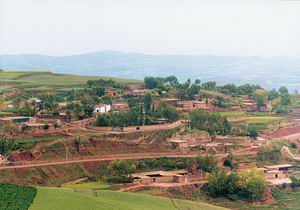Dalai Lama's home village rebuilt in rural overhaul
With rows of brick walls painted white with pink lines, the tiny hilltop village of Hong'Ai looks markedly different from the dusty mud-and-wood shanty towns common in west China.
 |
|
Hong'Ai village [File photo] |
The village, on the east edge of the Qinghai-Tibetan Plateau, is the birthplace of the 14th Dalai Lama, Tenzin Gyatso.
More than 70 years after the Tibetan spiritual leader left, Hong'Ai is at the front of China's massive drive to raze shanties and build safe, modern homes for the poor rural residents of the region.
By late September, construction will be completed and all the village's 54 households will live in homes built of brick and strong timber, says Xing Fuhua, chief official of Shihuiyao Township, which administers Hong'Ai.
Xing says the overhaul took about 16 months and cost the government 2.65 million yuan. Half the sum went in subsidies to households that built new homes on schedule and in accordance with safety standards.
"Everyone was enthusiastic. They tore down the old homes," says Gongpo, a deputy head of Shihuiyao. "Many of the mud and wood homes were about to collapse, but villagers could not afford to have them repaired."
Xing says each household could receive 19,000 yuan for building new homes and have their courtyard walls and the front door installed for free, which would cost roughly another 20,000 yuan.
These two investments equal the income of a family farming 1.67 hectares of land for 20 years, says Xing.
Hong'Ai remains a largely farming village with a per capita income of only 3,399 yuan last year, about two thirds the national rural average.
 0
0 






